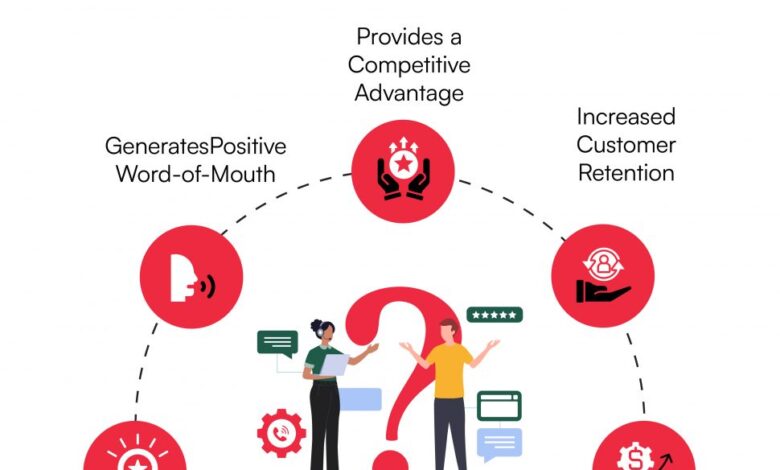Good Customer Service: The Foundation of Great Customer Experience (CX)

Good customer service is the backbone of a great customer experience (CX). It really starts with empathy, adaptability, and just being willing to meet customers where they are—emotionally and in whatever situation they’re stuck in. Every interaction a customer has with your business turns into either a good memory or a frustrating one. And honestly, these small moments end up shaping loyalty, reputation, and long-term business success more than most people realize.
When customer service is done right, it makes people wanna come back and trust your brand more. But if it’s done poorly, even long-time loyal customers might leave and try your competitors instead. And nowadays, with how fast the world is changing, people’s expectations keep shifting too—so effective, empathetic customer service is more important than ever. This is also why many companies now rely on customer experience management software to keep interactions consistent, informed, and aligned with customer needs.
Types of customer service
Because of technology, customers now have so many options to reach out to businesses. While in-person support still matters a lot, companies today really need to offer multiple channels so customers can pick whatever suits them best.
1. Walk-In Customer Service
Physical stores still matter. Customers get to talk to real people face-to-face, and that kinda helps build trust, connection, and just an overall more personal vibe.
2. Phone Support
A lot of people still prefer calling when the issue is complex or kinda urgent. Phone calls feel more reassuring, especially for customers who might not be super comfortable with digital stuff.
3. Email Support
Email works great for detailed issues or complaints that need proper explanation. It gives support teams time to investigate and respond properly. Plus, everything stays documented—which customers appreciate.
4. Live Chat
Live chat is super popular now because responses are quick. People can even multitask while waiting. And for businesses, it’s a really scalable way to help customers without them having to wait on long phone queues.
5. Social Media
Platforms like X, Facebook, Instagram, and LinkedIn let businesses show how responsive and transparent they are. Public replies show how they handle problems, while private messages help fix things one-to-one.
6. Interactive Voice Response (IVR)
IVR systems help customers find answers to simple questions without waiting for an agent. They reduce wait times and let agents focus on complex cases, which makes the whole support process smoother.
Principles of excellent customer service
Exceptional customer service really depends on the whole company’s commitment to understanding and supporting the customer. To keep the standard high, teams need to be empowered, communication needs to be smooth, experiences have to be personalized, and technology should be used smartly.
Here are the core principles:
1. Empowered Customer Service Representatives
Customer-facing reps need the right tools, training, and confidence to solve issues quickly. They should have things like:
- Access to full customer history
- Real-time insights about customer preferences or past issues
- Tools that help them respond faster and more accurately
Modern contact center software with AI and natural language processing can help by:
- Reading customer sentiment
- Giving context-rich insights
- Suggesting ideal responses
- Reducing manual tasks
This helps agents offer more helpful, accurate, and empathetic support every single time.
2. An Omnichannel Customer Service Strategy
Speed matters—a lot. Says 90% of customers want an instant response when they have a question.
An omnichannel approach makes sure:
- Every interaction—phone, chat, email, social—feels connected
- Customers don’t have to repeat themselves.
- Responses are quick and consistent.
- The whole experience feels smooth and seamless.
When customers switch channels without losing context, they feel more supported and valued.
3. A Personal Approach to Service
Customers seriously expect personalization today—71% want brands to tailor interactions, and 76% get annoyed when that doesn’t happen.
Personalization doesn’t mean reading minds. It simply means:
- Using customer profiles to know preferences
- Responding based on past interactions
- Offering helpful suggestions or timely offers
Tools like detailed Customer Profile Systems—such as Experience iD—help companies build a clearer picture of each customer so support feels warm and human, not robotic or generic.
4. Showing Empathy
Empathy is still the heart of customer service. But honestly, at scale, it can be tough for agents to understand each customer’s emotional state.
Conversational intelligence helps by using natural language processing to:
- Detect emotions
- Understand intent and frustration
- Score interactions based on sentiment
- Pull insights from reviews and social media.
When agents know how customers feel, they respond with better care, patience, and clarity. Customers feel heard, and agents feel more confident—creating a win-win situation.
5. Prioritizing the Right Issues
Even though every customer issue matters, not all of them are equally urgent. With limited time and resources, prioritizing becomes super important.
Agents should consider:
- How severe the issue is
- The customer’s frustration level
- Past efforts and interactions
- Time sensitivity
Plus, they shouldn’t waste time on routine admin tasks.
Post-call work, for instance, is a major cause of burnout—20% of agents think of quitting weekly because they’re overwhelmed.
Automated Call Summaries can help by instantly generating accurate recaps of calls, saving time and reducing stress. This lets agents focus more on actually helping people.
Conclusion
Good customer service isn’t just one department—it’s literally the heartbeat of a great customer experience. When businesses empower their teams, use omnichannel support, personalize interactions, show empathy, and prioritize effectively, they improve every customer touchpoint.
And when customers feel understood, valued, and supported, they return that energy with loyalty, strong recommendations, and long-term trust. In such a competitive world, great customer service isn’t just a “nice-to-have”—it’s what sets successful businesses apart.



